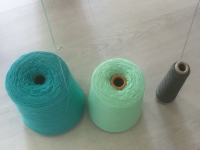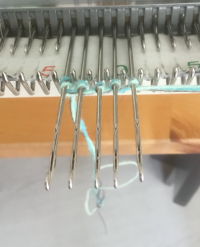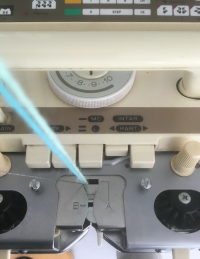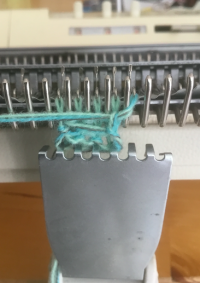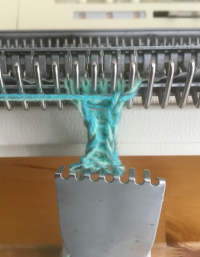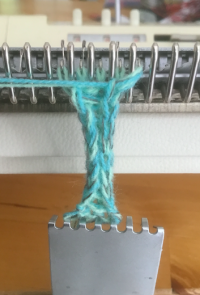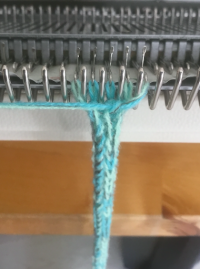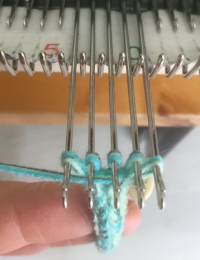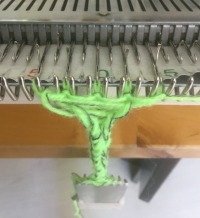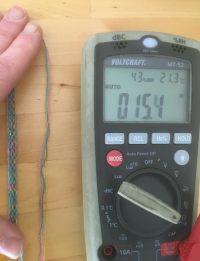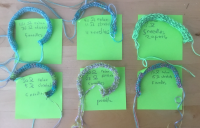ResistanceKnitting
This page is showing knitting tubes with conductive thread.
Cones with conductive thread and normal yarn.
The tube is knitted on 5 needles. The E loop mounting is used for all threads.
Setting of the slider, with one of the part knobs set. The tension 8-10, depends a bit on the thickness of the yarn.
The knitting is done only to one side, in a few tours, the tube is formed. Ending in tension 10 (maximum) and take of as usual.
With thicker yarn, the five needles are a needle apart.
Measuring the resistance in a relaxed and a stretched state.
Sic examples and the values.
As can be seen the values are all under 120 Ohm. This is because of the kind of conductive thread used: the sticky metal wire.
See http://interactionstation.wdka.hro.nl/wiki/Swatch_Making for more details on conductive yarns.
 The tube which is stretched, will light up the LED at that side.
The tube which is stretched, will light up the LED at that side.
An example of a swatch using the variable resistance of the knitted tube.
